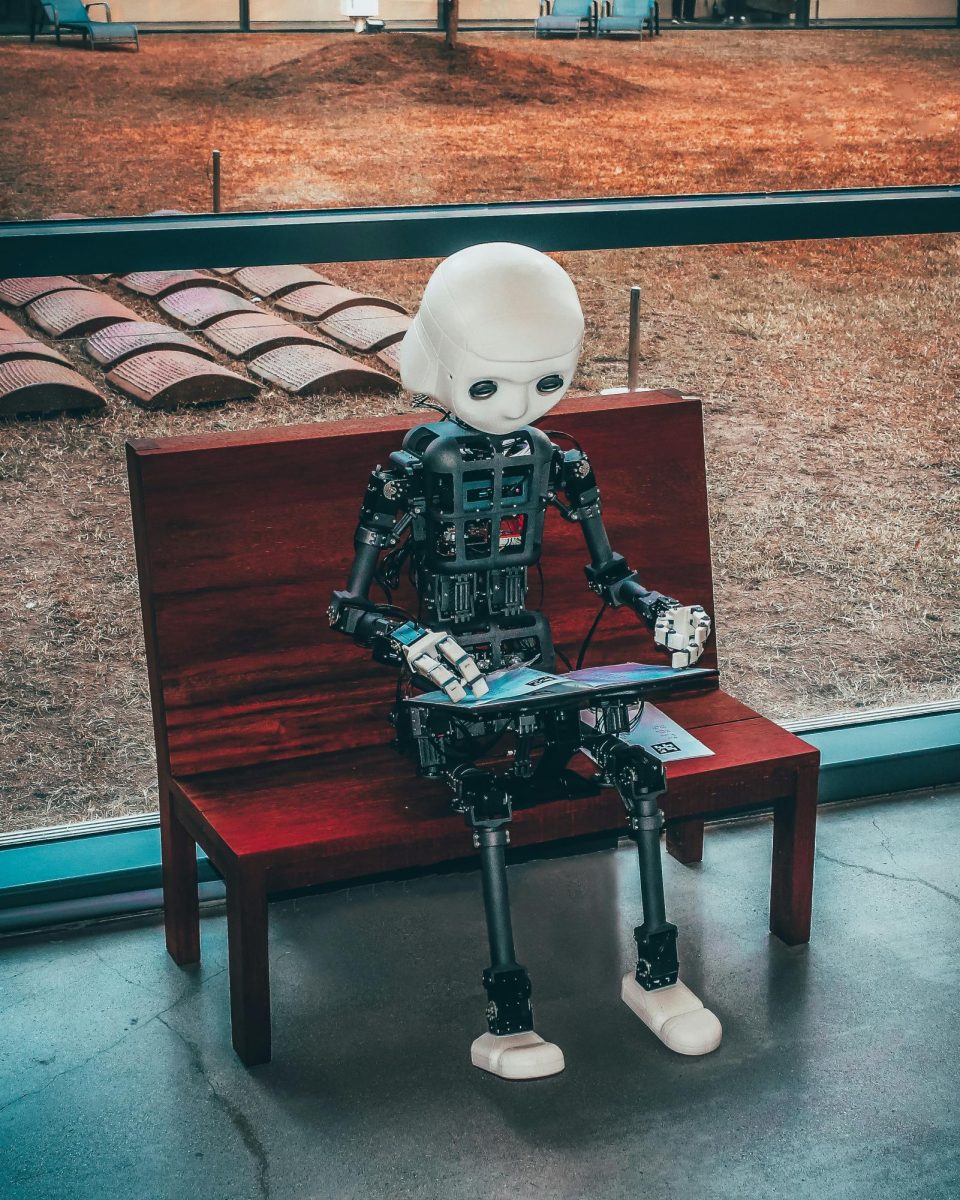“AI in classrooms can offer several benefits, like personalized learning. AI can adapt to each student’s needs, helping them learn at their own pace and providing extra support for those who need it. It can also automate tasks for teachers, such as grading or creating lesson plans, giving them more time to focus on teaching. AI-powered tools, like language translators or speech-to-text, can help students with different learning styles or disabilities, making education more inclusive. However, the dangers of AI in classrooms include the risk of students relying too much on technology, which could hinder their development of critical thinking and problem-solving skills. There are also concerns about privacy, as AI systems can collect personal data, and the potential for biases in educational content. Balancing the pros and cons is essential to ensure AI enhances, rather than harms, the learning experience.”
That whole paragraph you just read was written by the ChatGPT AI engine. This is why it is important to be safe and know the pros and cons of Artificial Intelligence (AI), especially in the classroom.
“Just use AI,” is a common phrase one may hear in classrooms. AI applications that “do the work for you” have become very popular: ChatGPT, Photomath, Question AI, Gauth Math, and Google AI are just a few. Many students are now using innovative AI technology to do their homework. While AI can be a helpful resource, knowing how and when to use it is essential.
AI can help students struggling academically as many AI apps provide step-by-step tutorials. This is extremely useful for students who may have been absent from class and missed lessons. AI provides not only answers but also tailored strategies. It can also be helpful for teachers. AI speeds up the grading process and shows teachers different ways to teach their lessons.
Freshman Arianna Lanzello explained, “AI is extremely beneficial because it helps with many things like [doing] homework, answering questions, and [providing] recommendations. With a filled schedule after school, like sports or clubs, AI helps save time. It gives you a chance to be a part of more activities and be more involved in school. It provides simple and easy ways to figure things out and learn from home. This can save students a lot of stress.” Junior Olivia Bartash agreed and said, “I think that AI can be a useful tool in a learning environment, especially when it comes to understanding a certain topic or even just coming up with ideas for a project.”
Freshman Shelli Tetelman expressed, “I feel AI can be used in both good and bad ways. It can help students to get a better understanding of a topic that they don’t understand, but it can also be taken advantage of by using AI to finish or complete work. Although AI can be taken advantage of, I think it can benefit students in different ways if used properly.”
Beyond the classroom, AI is everywhere, and safety when using or confronting it is important. The new iPhone 16 has an AI text feature that can give response suggestions. That means AI is reading your messages. It is critical to know when it is appropriate to use AI as a helpful tool and when it can be unsafe or intrusive. To stay sharp, people also must know how to think for themselves.
Freshman Taylor Kelly said, “While there are benefits [to using AI], it can be too much of an advantage. Nowadays, AI has been used for writing papers, paragraphs, homework, projects, etc. People are overusing AI instead of thinking for themselves.”
Many students tamper with the boundaries of plagiarism when using AI applications. Submitting work generated by an AI engine not only violates the school’s ethics code but worse, serves as grounds for suspension. In response, many teachers have found ways to check for AI using certain apps and websites. It is also common for students to become so comfortable relying on AI that they stop asking for help. This can disconnect students from their teachers.
AI is increasingly being integrated into many facets of life; whether the technology is good or bad is a matter of opinion. Nonetheless, it is important to know when and how to use it, especially in education.




































